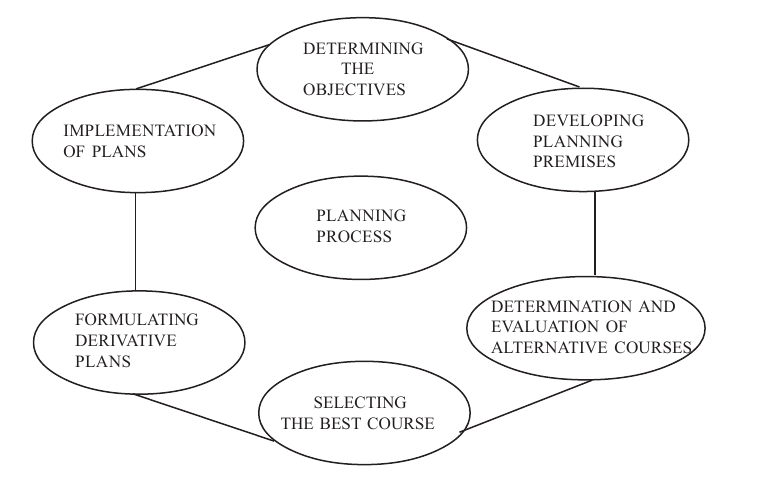Answer:
The following are the various stages involved in the process of planning:
1.Identifying business opportunities
It is necessary to make an analysis of both the internal and external environment to know the trends in the near future. Business activities are influenced by internal as well as external factors.
Government regulations, technological changes, availability of material and labour and the extent of competition are some of the important factors affecting business prospects.
2. Establishment of objectives
The second step in the planning process is to establish the organisational objectives in tune with the opportunities identified, taking into account the resources available

3. Determination of Planning Premises
Planning Premises are the assumptions made about the future happenings. As planning is for future and future is uncertain, certain assumptions about the future become necessary. Employee attitudes, technology used, managerial decision-making process, etc., are some of the factors influencing the internal environment of the business. The external environment, on the other hand, is influenced by factors such as demand, buyer behaviour, competitors’ actions, Government regulations, suppliers’ actions, technological changes and so on.
4. Identifying the alternative courses of action
There are always alternative ways of carrying out any task just as there are different routes to reach a destination point. To attain the objective of a business, different courses of action may be available. For example, to maximise profits, any of the following approaches may be used:
- Large scale production
- Curtailing the cost of production and distribution
- Maximising sales
- Increasing the market share and so on.
5. Evaluating the alternative courses of action
Once the alternative courses of action are identified, the next step is to evaluate the same. By evaluation we mean studying the merits and demerits of each. Each alternative should be examined carefully to decide on its suitability. For example, manual method of production and mechanical production are two alternatives.
6. Selecting the best course of action
Once the alternative courses of action have been evaluated, the next step is to select the best.
The finally selected course of action should help the organisation in making an optimum use of the available resources and help to attain the objectives set in the most effective manner.
7. Formulation of derivative plans
After the basic plan of the enterprise has been determined, the next step is to prepare the subsidiary or derivative plans to support the basic plan. For example, once the production plan of a manufacturer is ready, a number of supportive plans concerning the purchase of raw-materials, tools and equipment, engaging workers, etc., will have to be formulated.
8. Periodic evaluation and review
Once the implementation of the plan starts, it becomes necessary to evaluate performance at periodic intervals to ensure that the activities of the enterprise proceed in the right direction and as laid down in the plan. This will help to identify shortcomings, if any, in the plan and to take corrective action at the right time.
